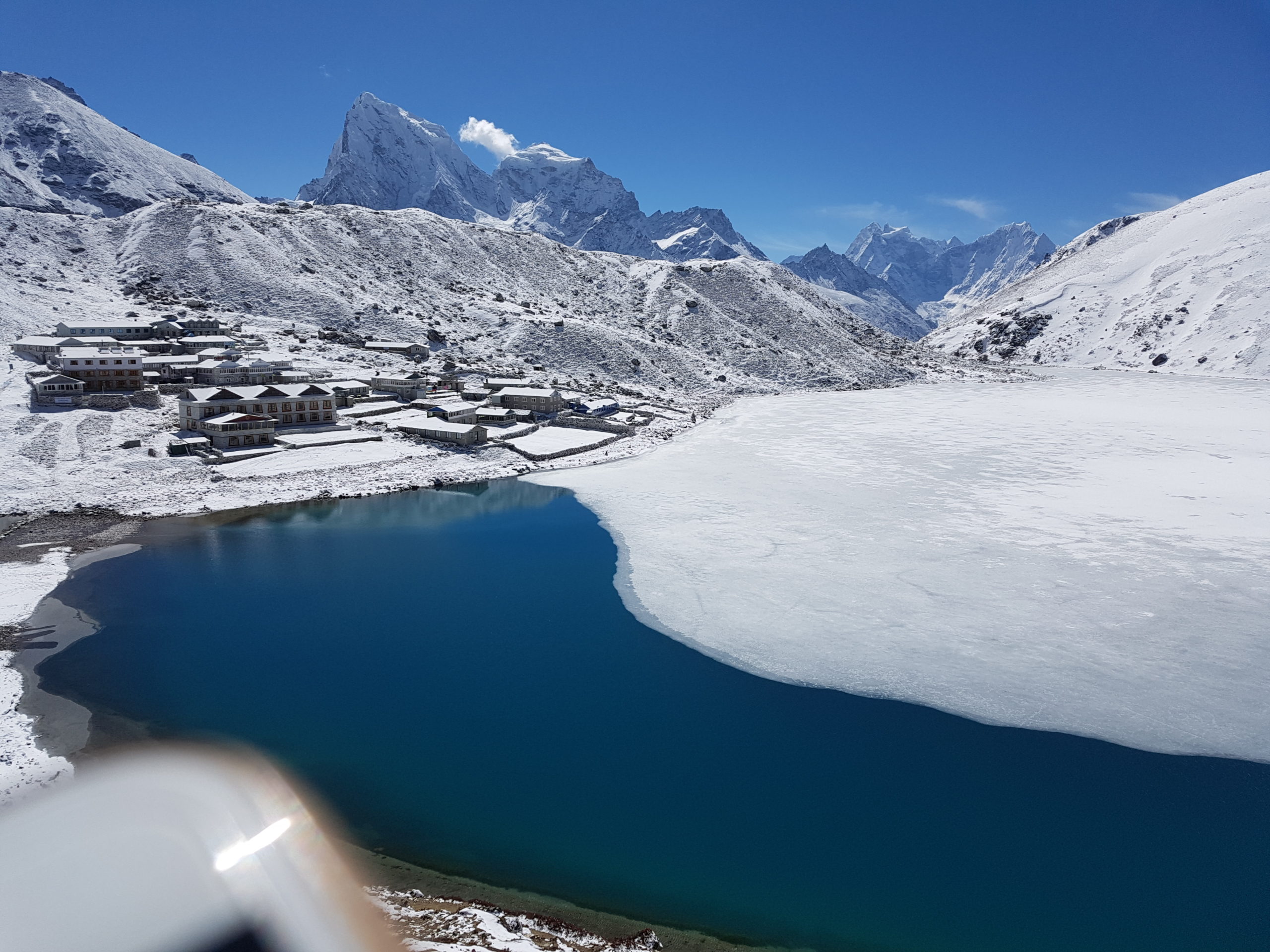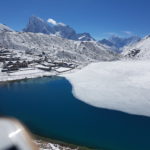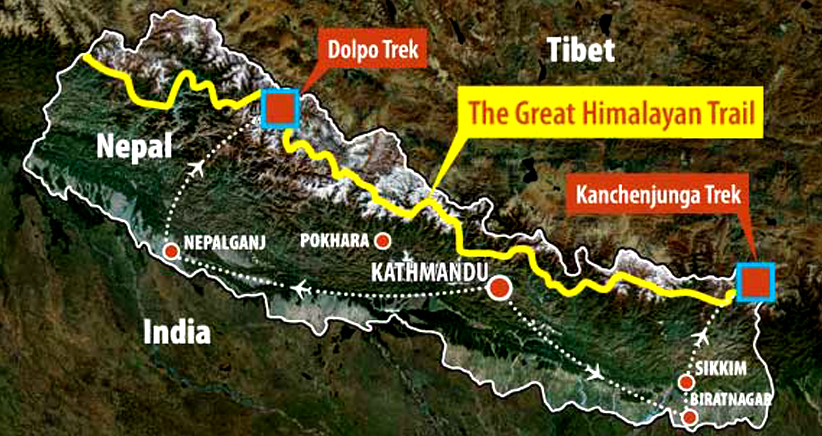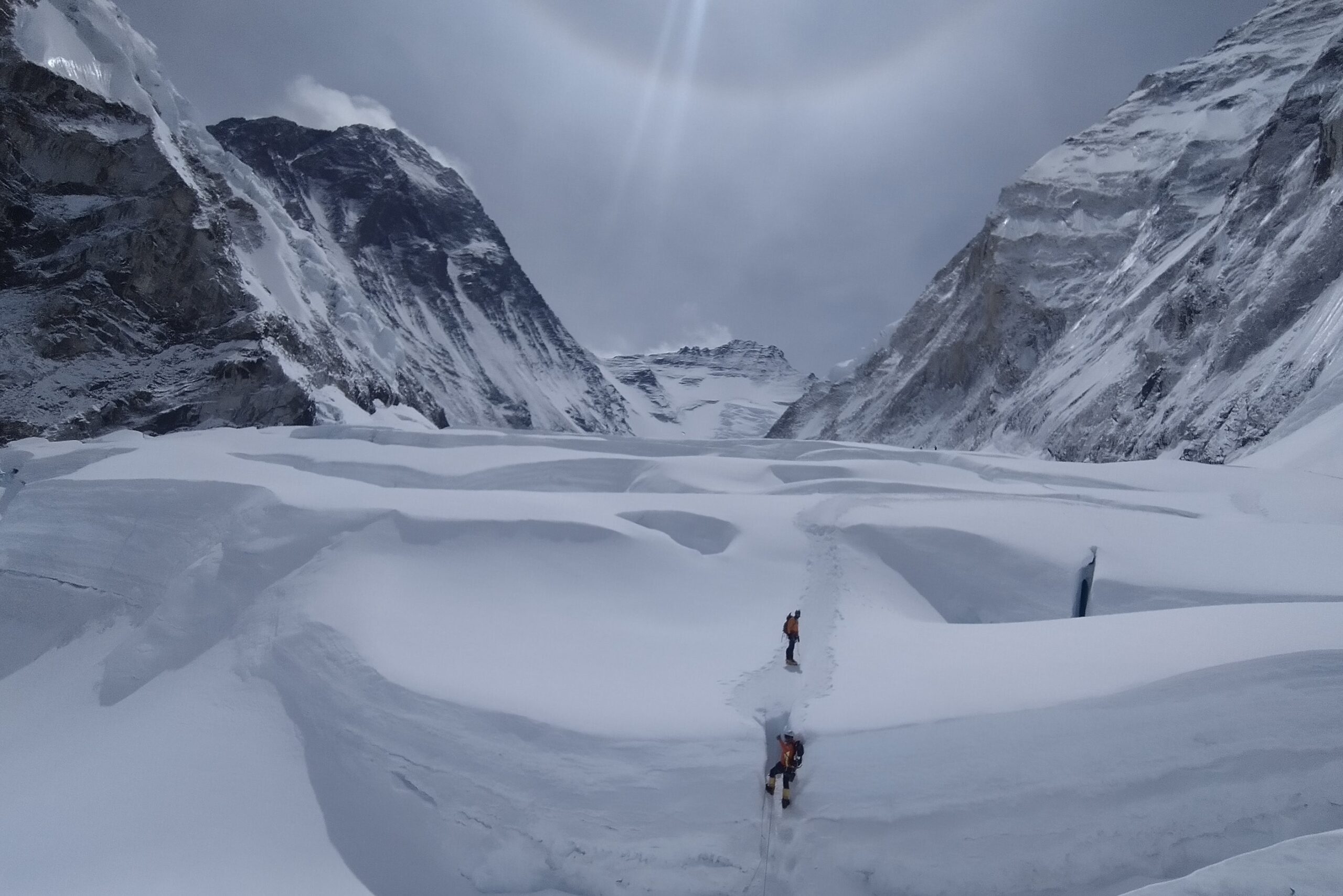Gokyo lake trek over chola pass
Lorem Ipsum has been the industry's standard dummy text
TRIP HIGHLIGHTS
High Himalayan Climbing And Expeditions Pvt. Ltd. welcome to Gokyo valley and Everest Base camp trek over night.
The Gokyo Lakes region at the head of the Dudh Kosi Valley provides a great alternative to the popular Everest Base Camp trek. It is a more tranquil trek through the Sherpa heartland that affords ample time for acclimatization with opportunities to savor the mountain panoramas from beautiful alpine campsites. The highlights of the trek are our ascent of Gokyo Ri. From the summit we gain superb views of Everest as well as the 8000m peaks of Lhotse, Makalu and Cho-Oyu. And crossing chola pass glacier (5,380m) is a real fun adventure which gives you an opportunity to set your foot at the highest point of your life. Gokyo Tso (Lake), also called Dudh Pokhari, is the main lake with an area of 42.9 ha (106 acres), and the village of Gokyo lies on its eastern shore. Gokyo Lake in Nepal’s Sagarmatha National Park, located at an altitude of 4,700m (15,400ft) above sea level. Unique among natural heritage sites world-wide is the Sagarmatha National Park, which includes Mt. Everest (8,848 m) and other high peaks such as Lhotse, Lhotse Shar, Cho-Oyu, Ama Dablam, Pumori, Kangtega, Gyachung Kang, Thamserku, Kwangde, and many more. Located North-east of Kathmandu, Sagarmatha National Park is 1,148 sq km in area and consists of the upper catchment areas of the Dudh Koshi, Bhote Koshi and the Imja Khola (rivers). Much of the park lies above 3,000m. Sagarmatha is rugged with deep gorges, glaciers and nonnegotiable ice and rock faces. Locally known as the ‘Khumbu’, it is the home of the famous Sherpa people.
The Sherpas make a living by farming barley and potatoes, and graze their yaks in high altitude pastures. Young Sherpas have also made their name in mountaineering and the trekking industry has of late become the community’s economic mainstay. In 1979 the park was declared a World Heritage Site.
Famous for its spectacular mountain peaks and the loyalty and friendliness of its inhabitants (the Sherpas), the Everest region (Khumbu) is one of the most popular destinations for tourists in Nepal.
While trekking is possible in this area the whole year round, the best times to visit are from the beginning of March to mid May and from the beginning of September to mid November. The winters are very cold and snow may make it difficult to travel higher than Tengboche, and also lodges may be closed above this altitude. Summers, on the other hand, are wet, and the spectacular peaks are often lost in the clouds. April and early May is a good time to see the hedgerows and trees bursting into bloom, with Rhododendrons, in particular, adding a spectacular splash of colour to the landscape. However, dust from the plains of India during the spring routinely provides less than ideal conditions for clear mountain views. The views are much better after the summer monsoons have cleared the atmosphere of dust, but the days are shorter and cooler.
Wildlife most likely to be seen in Sagarmatha is the Himalaya Tahr, Ghoral, Musk deer, Pikka (mouse hare) weasel and occasionally jackal. Other rarely seen animals are Himalayan black bear, wolf, lynx and snow leopard. Birds commonly seen are Impeyan pheasant, blood pheasant, snow cock, snow pigeon, red billed and yellow billed chough, Himalayan griffin vulture and lammergeyers. Sagarmatha National Park is also known as Khumbu region and sometimes, Everest region.
Sleep at Everest base camp in Tent ; 5365m.
- Scenic Flight To/From Kathmandu with Mountain Village of Lukla
- Trekking through small Sherpa villages
- Mountain panorama of Everest, Cho Oyo, Makalu, Lhotse, Nuptse, Island Peak, Ama Dablam, Lobuche and Kusum khanguru to name but a few
- Cross one of the high and famous pass of the Himalaya ‘Cho La pass (5,357m)
- Enjoy the sunrise on Everest and its massif from ‘Gokyo Ri’
- Witness one of the world’s highest lake ‘Gokyo Lake’ (4800m)
- Cross the longest glacier of Nepal ‘Ngozumba Glacier’
- A visit to the Tengboche monastery, which can be viewed from the top of Mt. Everest
- Hike up Kala Patthar for the best views of Mt. Everest and the Khumbu Glacier
- Mount Everest Base Camp
Itinerary
Day 1: Arrival in Kathmandu
Day 1: Arrival in Kathmandu
Day 2: Fly Kathmandu to Lukla and trek to Phakdhing (2,656m)
Day 2: Fly Kathmandu to Lukla and trek to Phakdhing (2,656m)
Day 3: Trek to Namche Bazaar (3,400m)
Day 3: Trek to Namche Bazaar (3,400m)
Day 4: Namche – Acclimatization day
Day 4: Namche – Acclimatization day
Day 5: Trek to Mongla (3,900m) – 4h
Day 5: Trek to Mongla (3,900m) – 4h
Day 6: Trek to Dole (4,050m) – 3h
Day 6: Trek to Dole (4,050m) – 3h
Day 7: Trek to Machhermo (4,470m) – 3h
Day 7: Trek to Machhermo (4,470m) – 3h
Day 8: Trek to Gokyo (4,790m) – 3½h
Day 8: Trek to Gokyo (4,790m) – 3½h
Day 9: Ascent of Gokyo Ri (5,357m) and move onto Dargnak
Day 9: Ascent of Gokyo Ri (5,357m) and move onto Dargnak
Day 10: Cross Cho La pass (5,380m) to Dzongla
Day 10: Cross Cho La pass (5,380m) to Dzongla
Day 11: Dzongla to Lobuche – 4h
Day 11: Dzongla to Lobuche – 4h
Day 12: Trek to Gorakshape after lunch trek to Everest Base camp. Overnight at Gorakshape 5180m.
Day 12: Trek to Gorakshape after lunch trek to Everest Base camp. Overnight at Gorakshape 5180m.
Day 13: Hike to Kalapather and trek down to Periche (4,200m) – 7h
Day 13: Hike to Kalapather and trek down to Periche (4,200m) – 7h
Day 14: Trek to Kyangjuma or Namche –
Day 14: Trek to Kyangjuma or Namche –
Day 15: Trek to Phakdhing
Day 15: Trek to Phakdhing
Day 16: Trek to Lukla
Day 16: Trek to Lukla
Day 17: Fly back to Kathmandu
Day 17: Fly back to Kathmandu
Day 18: Kathmandu – Free day
Day 18: Kathmandu – Free day
Day 19: Departure
Day 19: Departure
WHAT'S WE INCLUDE
- Meet and greet on arrival at Kathmandu Airport and transfer to your hotel
- Hotel accommodation in Kathmandu before and after your trek on a bed & breakfast basis tourist standard
- 11 days 3 meal a day
- Transfers from your hotel to and from your trek start point
- Return domestic flights to Lukla
- All National Park fees
- TIMS (Trekkers Information Management System) fees
- Accommodation 2 person sharing during the trek
- Service of our qualified mountain guides and porter
- our guides are multiple Everest Summiter and well trained.
- Guide and porter salary
- Insurance for all guides and porters
- Prices are based on 2 people sharing hotel rooms and tealodges throughout
- Transfer to Kathmandu airport
- Dally health check device : O2 meter ; Guide will check every day report of the health check
Not included in the cost
- International airfare and departure taxes
- Items of a personal nature
- Tips for the crew
- Entry visa for Nepal
- Personal trekking insurance (must cover trekking area up to base camp
- Meals and drinks not specified
Tipping
It is customary to tip your staff upon completion of your trip. The decision on how much to tip should be determined based upon how well the guides, cooks and porters served you while you were on the trip. The Nepal National Mountain Guide Associations recommends the following guidelines for tipping: $15 per day for guides, $10 per day for porters and $12 per day for cooks. These figures are the total tips given to the staff by the group, not per client.
The total number of staff is as follows: 1 guide per 4 clients. 1 porter per 2 clients. 1 cook per trip, on Island Peak, Mera peak , Ama Dablam , Everest Manasolu , Himlung ,Baruntse,Makalu , Himlung all the camping organize group. Be sure to bring enough cash for the duration of your trek, as ATMs are not available on route. Bring more than you think you need for contingencies.
HIGHEST ALTITUDE ON TREK: Gokiyo Lake – Gokiyo Ri- Chola Pass -Kala Patthar (5450m) and Everest Base camp.
PLACES OF INTEREST: Namche Bazaar, Sherpa capital of the Khumbu region; Tengboche, home of Nepal’s most famous monastery, situated beneath the impressive backdrop of Everest and picturesque Ama Dablam; Everest Base Camp; Kala patthar (view point).



